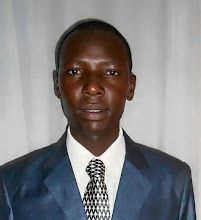Dec 31 (Reuters) - When several Colombian men were indicted in January 2010 on money-laundering charges, the case in Brooklyn federal court drew little attention.
It looked like a bust of another nexus of drug traffickers and money launderers, with mainly small-time operatives paying the price for their crimes.
One of the men was Julio Chaparro, a 48-year-old father of four who owned three factories that made children's clothing in Colombia.
But to U.S. authorities the case was anything but ordinary. Chaparro, prosecutors alleged, helped run a money-laundering ring for drug traffickers that took advantage of lax controls at UK-based international banking group HSBC Holdings Plc. It was one of the most important leads for U.S. investigatorspursuing a case against the bank that eventually led to a $1.9 billion settlement on Dec. 11.
Chaparro was "basically putting the orchestra together" and investigators saw "him as amajor player in terms of cleaning a lot of money," said James Hayes, special agent in charge of Homeland Security Investigations at U.S. Immigration and Customs Enforcement in New York.Known as ICE, the agencyand its task force led the probe.
The Colombian's lawyer, Ephraim Savitt, said Chaparro was a middleman in the operation, but disputed the extent of his client's role, saying he was the"page turner of sheet music for the conductor."
Chaparro, who was arrested in Colombia in 2010 and extradited to the United States in 2011, pleaded guilty to a money-laundering conspiracy count in May and is awaiting sentencingin 2013.
An HSBC spokesman declined comment.
Much about the trail that drug traffickers used to move U.S. dollars - the proceeds from drug sales - through HSBC and other banks remains unclear. By design, the process is layered to evade detection.
But a review of confidential investigative records that originate fromtwo U.S. Attorney office probes and federal court filings in New York and California, as well as interviews with senior law-enforcement officials, shows how investigators tracing the activities of people who allegedly worked with Chaparro were able to expose large-scale money laundering at one of the world's biggest banks.
The federal law-enforcement task force - named after El Dorado, the mythical city of gold in South America - used wire taps, email and computer searches, information from at least one inside source, and old-fashioned surveillance, to piece together the ring's operations.
SMUGGLED ACROSS BORDER
Drug cartels sold narcoticsin the United States and routed the cash to Mexico,often using couriers to smuggle it across the border. That cash would then be put into bank accounts at HSBC's Mexicounit, where large depositscould be made without arousing suspicion, according to U.S. Department of Justice documents.
In one filing, U.S. prosecutors said, Chaparroand others allegedly utilized accounts at HSBC Mexico to deposit "drug dollars and then wire those funds to ... businesses located in the United States and elsewhere. The funds were then used to purchase consumer goods, which were exported to South America and resold to generate 'clean' cash."
In a typical transaction, a middleman in a drug cartel would offer to deliver consumer goods, such as computers or washing machines, to Colombian businesses on favorable terms. Another person in the United States would buy the goods from firms using funds from drug trafficking, and fulfill those orders.
Money launderers exploited the laxness of HSBC in policing shadowymoney flows, the Department of Justice saidearlier this month. Failuresincluded not conducting due diligence on customers, not adequatelymonitoring wire transfers or cash shipments and nothaving enough employees to run anti-money laundering systems. U.S. Assistant Attorney General Lanny Breuer called the lapses"stunning failures of oversight."
The situation was so bad, according to the Department of Justice, thatin 2008, the head of HSBC's Mexican operations was told by Mexican regulators that a local drug lord describedthe bank as "the place to launder money."
The Chaparro probe, led by ICE and the Justice Department, converged over the past two years with two other investigations - led by federal prosecutors and investigators in West Virginia and by the Manhattan district attorney- resulting in this month's settlement with HSBC.
HSBC and its employees avoided criminal indictments, as the bank agreed instead to a deferred-prosecution deal that forces it to strengthen controls and accept a compliance monitor.
Today, Chaparro sits in a federal detention center in Brooklyn, reading the Bible and awaiting sentencing, said Savitt, a former U.S. prosecutor in Brooklyn, who submitted a list of questions to Chaparro for Reuters.
"He is contrite, regretful and ashamed about his crimes," Savitt said. "He wants to serve his time and rejoin his family.
